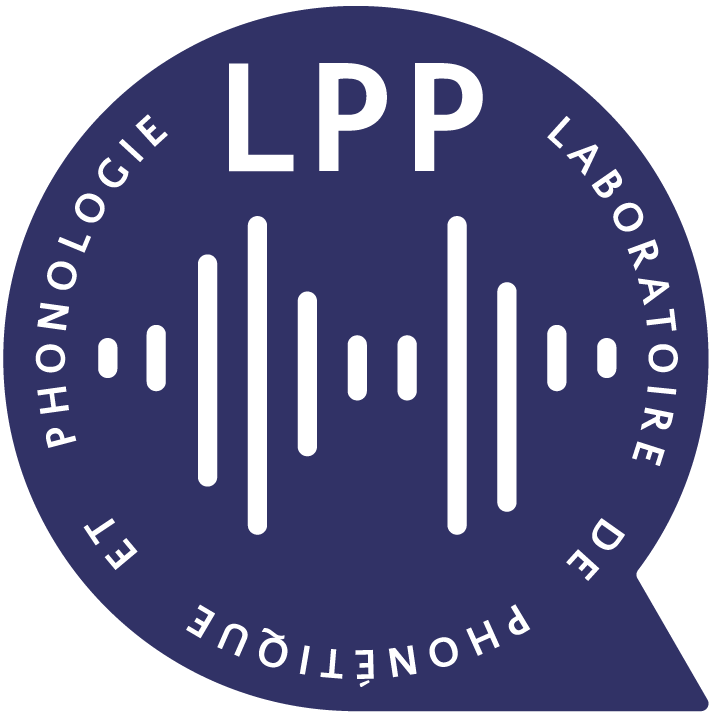Nous accueillons à partir du 22 mars 2023 le professeur Doris Mücke (IfL Phonetics, Université de Cologne) pour sa série de conférences LABEX sur « Speech dynamics : Mapping phonetic surface to phonological forms in neurotypical and atypical speech«
Les conférences auront lieu aux dates suivantes :
– Mercredi 22 mars : 14-16h – U.Sorbonne Nouvelle, Maison de la Recherche, Salle du Conseil
– Mercredi 05 avril : 14-16h – U.Sorbonne Nouvelle, Maison de la Recherche, Salle du Conseil
– Mercredi 10 mai : 12h-14h – U.Sorbonne Nouvelle, Maison de la Recherche, Salle Claude Simon
– Mercredi 07 Juin : 4h-16h – U.Sorbonne Nouvelle, Maison de la Recherche, Salle du Conseil
Abstract
Speech dynamics: Mapping phonetic surface to phonological forms in neurotypical and atypical speech (Doris Mücke)
In the last decades, a growing body of research has pointed out the dynamic nature of the mind. To overcome limitations imposed by symbolic approaches, researchers from many disciplines have turned to the framework of dynamical systems describing a multitude of different cognitive processes including the production and perception of speech sounds and their cognitive representations as well as movement coordination (Kelso 1995; Pierrehumbert et al. 2000; Spivey 2007; Chitoran & Cohn 2009; Roessig & Mücke 2019). One potential strength of dynamical systems is that they can handle a high amount of variability. They do not separate between discrete symbolic representations and the continuous representations of the physical world. Moreover, they integrate invariant relations between variant parameters to generate the richness of the observable physical output (Browman & Goldstein 1986; Gafos & Benus 2006; Mücke et al. 2017). In this seminar, I will provide the basics of dynamical systems and their application to capture the speech system’s local and global modulations, such as prominence marking in different speaking styles. This includes the description of intonational and textual variation exhibiting systematic categorical and gradient changes in a multidimensional phonetic space. In the second step, I will discuss the application of dynamical systems to impaired speech and aging. Speakers aim to compensate for problems of the speech motor system in the temporal and spatial dimensions. I will analyse the breakdown in control in motor speech disorders and suggest expanding traditional dynamical models developed with respect to neurotypical speech.
1. Basics and challenges of speech dynamics
The dynamical systems theory has been applied to the coordination of e.g., limb movements (finger, arm, legs) and has been extended to linguistic theory (Haken et al. 1985). An important component of dynamical systems is the concept of point attractors, which are stable states in the continuous phase space the system travels towards. I will showcase how these attractors help to understand the variability in speech output and its relation to linguistic functions, e.g., when investigating sound change, phonological alternations or prosodic prominence on the segmental and intonational tiers (Gafos & Benus 2006; Roessig & Mücke 2019).
2. Dealing with the complexity of prosodic systems
Prosody, the rhythmic and tonal organization of speech, plays an integral role in communication. I will discuss, how categorical and gradient changes can be understood as the scaling of one control parameter modulating different prosodic dimensions at the same time and how modulations can change in relative importance when investigating different speaking styles, such as loud and habitual speech (Roessig & Mücke 2019; Pagel et al. 2021). From a methodological perspective, I will also demonstrate the relative importance of acoustic and articulatory variables conducted on a dataset on focus marking in German and relate the results to the question of errors in the interpretation of phonetic data (Mücke et al. 2020).
3. Applying speech dynamics to impaired speech and aging
Especially for impaired speech, the concept of articulatory undershoot and overshoot is important allowing for different degrees of temporal and spatial modulations. However, it can be difficult to
determine whether the speech output is the direct result of a perturbated speech system or learnt compensatory strategies in speakers with chronic motor speech impairments due to neurological
conditions (Mücke et al. 2014; Thies et al 2021). The discrepancies between the empirical-based movement contours and modelled predictions exemplify the vast challenges when trying to map
phonetic contours to phonological forms. I will compare the effects of healthy aging and Parkinson’s disease on speech motor performance. In addition, I will conclude that the speech system seems to be affected by age and disease but speakers develop compensatory strategies.
4. Modelling unpredictable patterns in speech production
The flexibility of dynamical systems has recently been described as being insufficient to account for perturbated or highly noisy speech (Parrell & Lammert 2019), such as the speech output of patients with movement disorders (Parkinson’s disease). The shape of the kinematic contours can deviate considerably from those predicted by the models and an application of these models to impaired speakers can be even more difficult. In a critical discussion, I propose the introduction of stochastic noise as a random variable in dynamic simulations. I will conclude that noise plays also a role in modelling neurotypical speech – ranging from syllable repetition tasks to natural sentence production.


